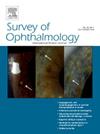打破障碍:在急诊科使用非眼球震颤眼底照相机的方法。
IF 5.1
2区 医学
Q1 OPHTHALMOLOGY
引用次数: 0
摘要
尽管有证据表明,非眼动力眼底照相机在非眼科环境中是有益的,但在美国只有少数医院可以使用。从基于研究的证据到临床实践的改变之间的滞后性凸显了新技术和新实践实施的复杂性。我们采用科特(Kotter)的 "八步变革模式",描述了在普通急诊科(ED)成功实施非眼球震颤眼底照相机与光学相干断层扫描(OCT)相结合的步骤。我们前瞻性地收集了急诊室接受过培训的人员数量、实施后第一年每周获得的成像研究数量,并记录了每月的主要成就、结果测量、实施障碍和可能的解决方案。每周对 12 到 42 名患者进行成像,总共对 1274 名患者进行了成像,这表明在实施一年后,急诊室持续使用了非眼球震颤眼底照相机/OCT。实施过程取决于多学科合作、广泛的沟通、对员工的协调培训以及持续的激励。未来可能会使用人工智能深度学习系统自动解读眼底成像,作为急诊室或其他非眼科医疗服务提供者的即时诊断辅助工具。本文章由计算机程序翻译,如有差异,请以英文原文为准。
Breaking the barriers: Methodology of implementation of a non-mydriatic ocular fundus camera in an emergency department
Despite evidence that non-mydriatic fundus cameras are beneficial in non-ophthalmic settings, they are only available in a minority of hospitals in the US. The lag from research-based evidence to change in clinical practice highlights the complexities of implementation of new technology and practice. We describe the steps used to implement successfully a non-mydriatic ocular fundus camera combined with optical coherence tomography (OCT) in a general emergency department (ED) using Kotter’s 8-Step Change Model. We prospectively collected the number of trained personnel in the ED, the number of imaging studies obtained each week during the first year following implementation, and we documented major achievements each month, as well as outcome measures, barriers to implementation and possible solutions. Between 12 and 42 patients were imaged per week, resulting in a total of 1274 patients imaged demonstrating sustained usage of non-mydriatic fundus camera/OCT in the ED one year after implementation. The implementation process was contingent upon multidisciplinary collaboration, extensive communication, coordinated training of staff, and continuous motivation. The future will likely include the use of artificial intelligence deep learning systems for automated interpretation of ocular imaging as an immediate diagnostic aid for ED or other non-eye care providers.
求助全文
通过发布文献求助,成功后即可免费获取论文全文。
去求助
来源期刊

Survey of ophthalmology
医学-眼科学
CiteScore
10.30
自引率
2.00%
发文量
138
审稿时长
14.8 weeks
期刊介绍:
Survey of Ophthalmology is a clinically oriented review journal designed to keep ophthalmologists up to date. Comprehensive major review articles, written by experts and stringently refereed, integrate the literature on subjects selected for their clinical importance. Survey also includes feature articles, section reviews, book reviews, and abstracts.
 求助内容:
求助内容: 应助结果提醒方式:
应助结果提醒方式:


